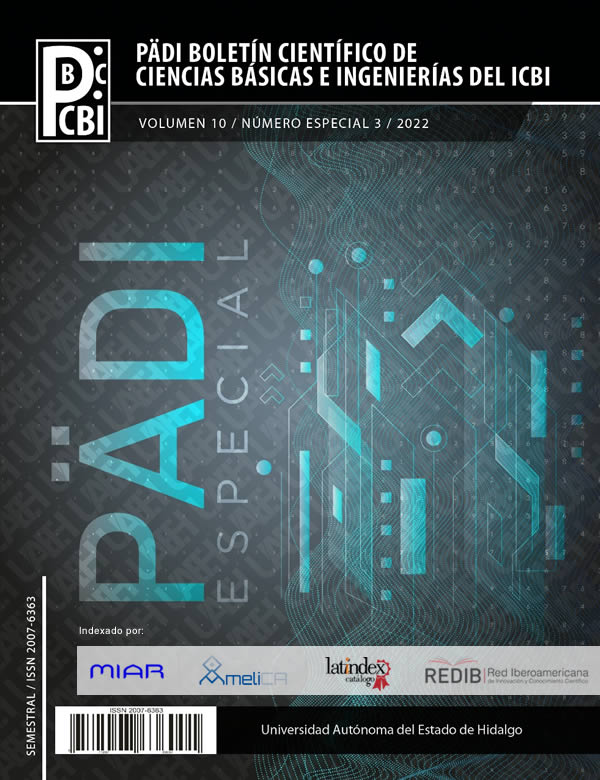Software prototype to support patients with olfactory disorders
Abstract
The perception of smells is closely linked to our evolution and survival, but also to our ability to remember. Before the COVID-19 pandemic, olfactory disorders were attracting interest in the medical community, which was further increased by the sequelae of the disease. However, how could Information and Communication Technologies (TIC) together with Human Computer Interaction (HCI) help in the memory of aromas? To answer this question, an extensive investigation of the possible causes that induce the presence of an olfactory disorder has been carried out, for this reason our proposal for the design of the Berinque' software prototype emerged, based on the smells known by most people. who live in Mexico, and that is why we are sure that it will contribute to stimulating information on the memory of odors housed in the hippocampus and in this way will help in the prevention or recovery of patients with olfactory disorders
Downloads
References
Andrieu, P., Bonnans, V., Meneses, J. & cols., (2014). A modular, computer-controlled system for olfactory stimulation in the MRI environment. Behav Res 46, 178–184. DOI: 10.3758/s13428-013-0362-x
Bitstrip. Crea tu propio emoji. (2018). Recuperado el 12 de junio de 2018 de: https://www.bitmoji.com/
Bonfils, P., (2008). Fisiología, exploración y trastornos de la olfacción. Elsevier Masson, Francia.
Carrillo, B., Carrillo, V., Astorga, A. & Diego Hormachea, D., (2017). Revista Otorrinolaringóloga Cir. Cabeza Cuello 77, 3, 351-360.
Chacón, M., Morales, P. & Jiménez, A., (2008). Patología de la olfacción, olfatometría y manejo de los problemas olfativos. Hospital Virgen de la Salud.
García, M., & Santana, P. (2013). Design, Evaluation and Impact of Educational Olfactory Interfaces. Algoma University: Chicago, Estados Unidos.
Guarneros, M. & Hudson, R. (2009). La contaminación del aire deteriora la función olfativa cotidiana en residentes de la ciudad de México. Revista del Instituto de Investigaciones Biomédicas, Universidad Nacional Autónoma de México (UNAM) 4,3, 81-86.
Guerrero, V., (2018). El aroma del recuerdo: olfato y mal de Alzheimer. UNAM: México.
Hariri, S., Mustafa, N.A., Karunanayaka, K. & Cheok, A.D., (2016). Electrical Stimulation of Olfactory Receptors for Digitizing Smell. NGHAI Workshop, HAI. ACM.
Instituto Nacional de Estadística y Geografía, (2017). La discapacidad en México, datos al 2014: versión 2017. INEGI México.
Interaction Design Foundation. User Centered Design. ,(2018). Recuperado el 03 de abril del 2018 de: https://www.interaction-design.org/literature/topics/user-centered-design
Montreal cognitive assessment (MoCA). The Montreal Cognitive Assessment MoCA is a brief cognitive screening tool for Mild Cognitive Impairment. (2018). Recuperado el 04 de Julio del 2018 de: https://www.mocatest.org/
Mothelet, V.G., (2008). El aroma del recuerdo: olfato y mal de Alzheimer. ¿Cómo ves? Revista de divulgación de la ciencia de la UNAM 112, 10, 10-15.
Pérez, P. S., Cadena, A. A., Chanes, D. V. & Guzmán, R. G., (2012). Questionnaire on Mexicans' Familiarity with Odor Names. Journal of Sensory Studies 27, 4, 277-285.
Sutherland, S., (2020). Comienza a aclararse la misteriosa pérdida del olfato debida a la COVID-19. Investigación y Ciencia. Recuperado el 15 de enero de 2021 de: https://www.investigacionyciencia.es/noticias/comienza-a-aclararse-la-misteriosa-prdida-de-olfato-debida-a-la-covid-19-19294.
Toledano, A., González, E., Onrubia, T.J., Herráiz, C., Mate, M.A., García, M., Novarro, M., Plaza, G., Aparicio, J.M., De los Santos, G. & Galindo, N., (2003). Test de Olfato de
Connecticut (cccrc): valores en voluntarios sanos. Acta Otorrinolaringológica Española 54,10, 678-685.
Yanagida, Y. & cols., (2008). HCI beyond the GUI: Design for Haptic, Speech, Olfactory, and Other Nontraditional Interfaces. Elsevier, Ámsterdam. 267-290.
Yáñez, C., Mora, N., & Nurko, B., (2004). Prueba corta de olfato a utilizarse como una prueba de diagnóstico confiable. Anales Médicos.Centro Médico ABC, México 49, 2, 82-86.














